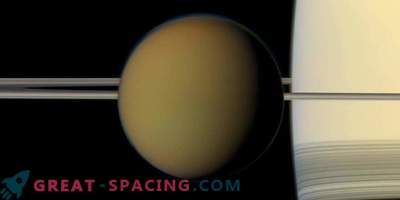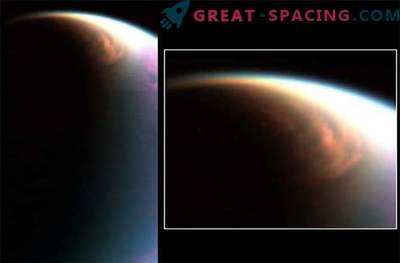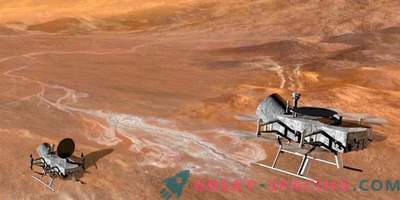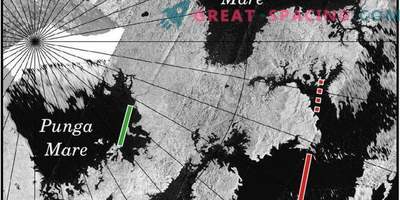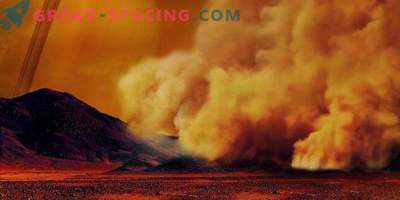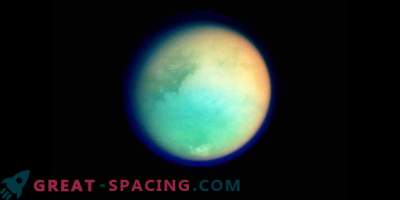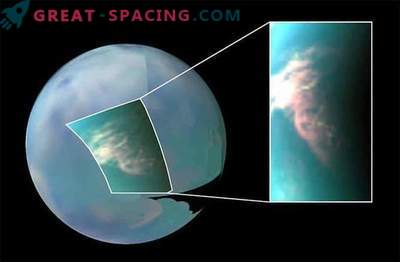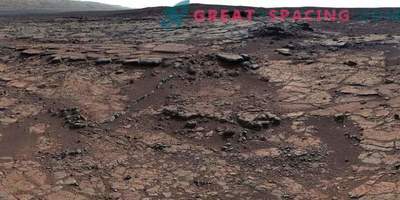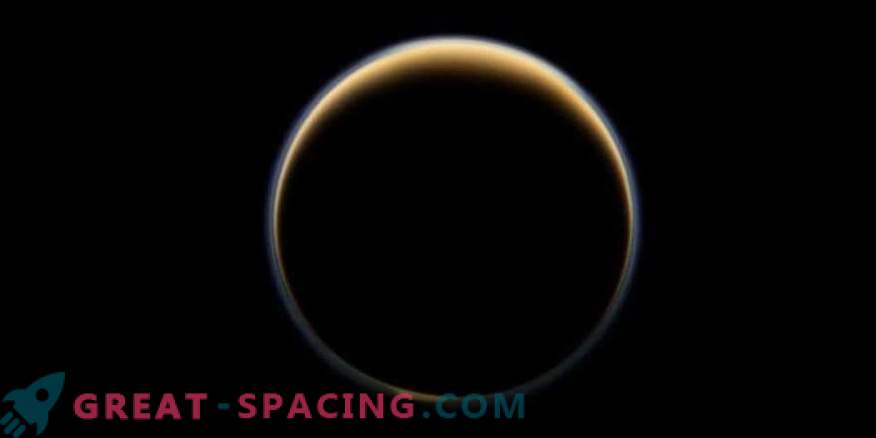
A spacecraft from Earth visited Titan, having obtained a lot of useful information. The hero became the apparatus Huygens, which until the last transmitted signals. What did he learn?
Amazing Methane World

Titan's atmosphere captured using blue, green and red spectral filters
Due to the presence of liquid on the surface, Titan is perceived as a potential colony or place to search for life. The atmosphere is incredibly dense and closes the surface of the review, as on Venus. Consists of nitrogen and methane, but almost no free oxygen is found.
It is important to understand that liquid water is not found here, and lakes and seas are filled with liquid methane and ethane. This is a cold place (Saturn's satellite is in the outer solar system), but scientists still believe that life can be found there. Therefore, it is not surprising that the researchers decided to send a spacecraft there.
Exploration of another world
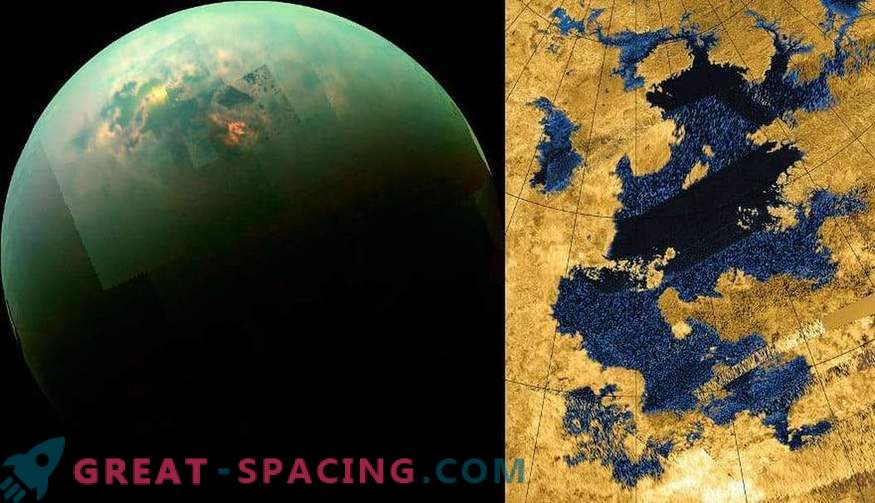
Mapping of the polar seas of Titan (left) and a radar image of the Kraken Sea (right) captured by Cassini
The Huygens apparatus was launched back in the far 1997. The name was given in honor of the astronomer from Holland Christian Huygens, who was the first to find not only Titan, but also the rings of Saturn. The main mission was called “Cassini”, which aimed at a large-scale study of the planet, but the Huygens probe was developed specifically for the study of the satellite. In December 2014 the apparatus separated from Cassini and headed for Titan. It is important to understand that this mission has become truly breakthrough. After all, Huygens managed to make the first successful landing on an object in the external solar system!
Landing system
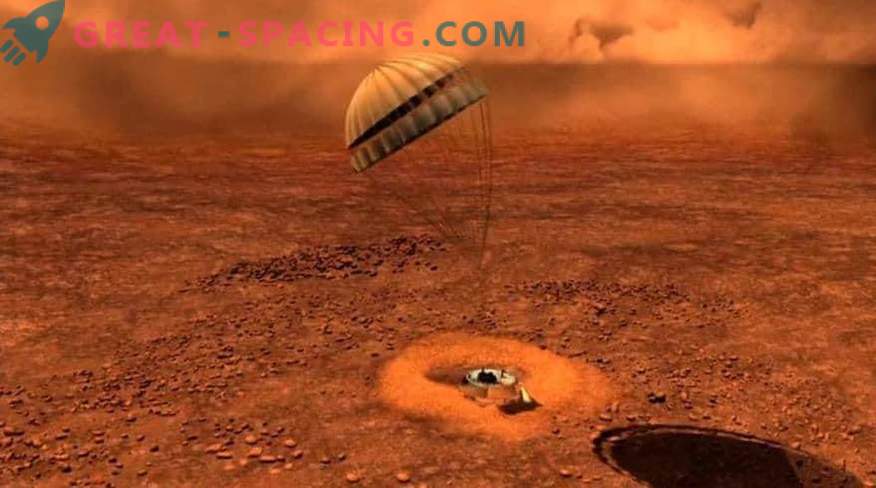
Artistic interpretation of the descent of the Huygens probe
The space probe landed January 14, 2005. Scientists have provided the presence of lakes and seas, so the unit could safely sit in the “liquid” and hold out for several minutes. But he was lucky and managed to aim at a hard surface.
To slow down as they entered, they used the resistance of the atmosphere Titan and a parachute system. During the flight from Earth to Saturn, the probe did not function at all. It was only included periodically to test performance. It was expected that on the surface of Titan he would be able to work for about 30 minutes.
The apparatus spent 2 hours 27 minutes 50 seconds on descent. Radio communication was turned on at an early stage, so the researchers could listen to the descent and landing for about 3 hours. The engineers were pleasantly surprised by the capabilities of Huygens, who managed to give signals 72 minutes since the moment of descent beyond the visible horizon.
Signals went to Earth not directly, but were broadcast by Cassini. The last waves were captured with the help of the Australian radio telescope. The device managed to send about 350 photos of the planned 700 (there was a failure, and some of the data was lost). As a result, the signals ceased to arrive, and we said goodbye to the probe that remained forever on Titan.
What Huygens found on Titan

The poster displays a composite view of the imaging unit during the descent / radial spectrometer, obtained when the Huygens probe was mounted on the surface of Titan. The sizes of objects located near the center are equal to the parameters of the human foot. Photo received on January 14, 2005.
For the first time we were able to look at a distant satellite from its own surface. At the site of the landing (the probe made a 12-centimeter dent) it was possible to examine traces of water ice pebbles, scattered across the orange surface layer. Most were covered with a faint methane haze.
In the first photographs, drainage canals, seas and a coastline shrouded in mist were viewed. The rounded pebbles hinted at contact with liquids, and reached 15 cm in size. The analysis of the atmosphere suggested thoughts about the weather on Titan, where sudden floods and heavy showers change over decades or centuries of drought. The probe recorded powerful westerly winds, reaching speeds 430 km / h.
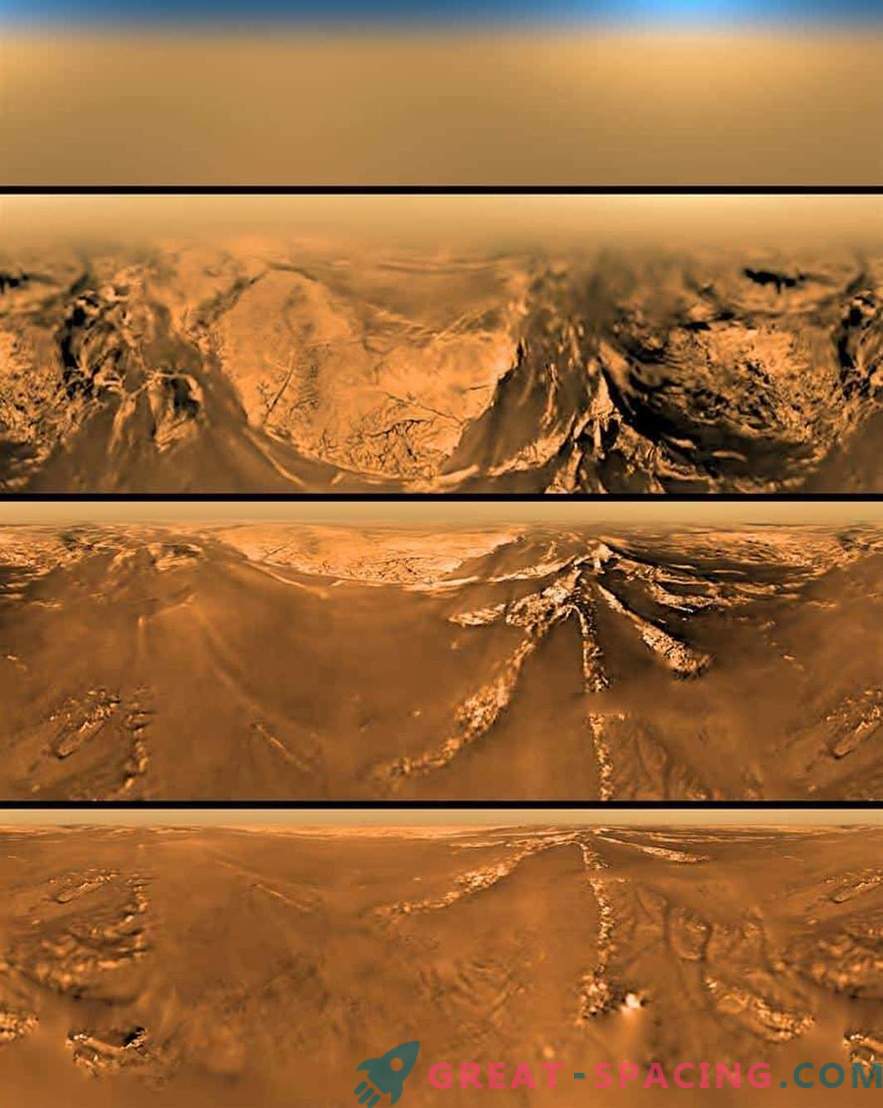
This poster shows a flattened projection of the view from the imaging unit during a descent / spectral radiometer on an ESA Huygens probe at four different heights. Photos received on January 14, 2005. The Huygens probe arrived at Saturn’s Titan satellite with the help of the Cassini spacecraft operated by the Jet Propulsion Laboratory (Pasadena). At NASA, two devices were installed on the probe: the imaging unit during descent / spectral radiometer and gas chromatography mass spectrometer. The Cassini-Huygens mission is considered a joint project by NASA, ESA and the Italian Space Agency. For the management of the mission responsible representatives of the Jet Propulsion Laboratory. The spectral radiometer team operates from the University of Arizona (Tucson). Found and finds that greatly surprised the researchers. For example, on Titan we found a second layer of the ionosphere, located below the main one (at the level of 60 km). We also found a safe location in the atmosphere, where in general there is no wind and the situation is as calm as possible. This Paradise is located at an altitude of 80 km.
Postscript
Mapping of the polar seas of Titan (left) and a radar image of the Kraken Sea (right) captured by Cassini
Huygens did not have a goal to prove the existence of life or to look for organisms. However, his observations showed that the environment of Titan strongly resembles the one that was present at the early stage of the development of the Earth. What about liquid water?
In 2010, researchers decided to conduct an experiment to develop life in the atmosphere of Titan (methane, nitrogen and carbon monoxide). Surprisingly, in the end, we managed to find 5 nucleotide bases (DNA and RNA building blocks). Therefore, life still has a chance (albeit still theoretical). So researchers are still interested in this satellite and can send a new mission.
